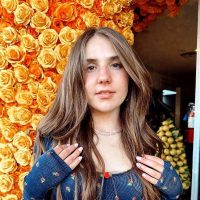| Her parents divorced when she was two years old, and her mother then moved to Timmins in Ontario with her and her sisters. |
| In Ontario, her mother married Jerry Twain, an Ojibwa from the Mattagami First Nation. Jerry adopted the girls and changed their last name to Twain. |
| When her step-brother, Mark, was a toddler, Jerry and Sharon adopted Jerry’s baby nephew, Darryl, after Darryl’s mother died. |
| Some people mistakenly think she is of Ojibwa descent because of her step-father, Jerry. |
| She is officially listed as a member of the Temagami First Nation and also owns its status card. |
| As her stepfather, Jerry Twain, belonged to Ojibwa, she has rights from the Jay Treaty of 1795 and is legally registered as having 50% Indigenous American blood. |
| Shania Twain once shared that as a child, her mother told her that her biological father belonged to the Cree community in Canada; however, later, his family denied this. |
| Her maternal great-grandmother was from the family of renowned French carpenter Zacharie Cloutier. Her maternal grandmother belonged to Newbridge, County Kildare, Ireland. |
| During a media interview, Shania Twain mentioned that her childhood was difficult. Her parents had little earnings, resulting in insufficient food at home. |
| Her mother and stepfather's marriage often faced disturbances, and she witnessed violence between them from a young age. Her mother struggled with depression. She did not inform school authorities, fearing they might break up her family. |
| Shania Twain once convinced her mother to take her and the children to a homeless shelter in Toronto, but in 1981, her mother returned to her step-father, Jerry, with the children. |
| In Timmins, Shania started singing at bars when she was eight years old to help pay her family’s bills. She earned $20 by singing for the customers between midnight and 1 a.m. after the bar stopped serving alcohol. |
| As a teenager, Shania Twain worked at McDonald’s for several years after school while singing in bars at night. |
| She did not like singing in bars but her love for music motivated her to perform. |
| Shania Twain was invited to perform on the CBC’s Tommy Hunter Show when she was 13 years old. |
| When studying at Timmins High and Vocational School, she sang for a local band called Longshot. |
| In 1980, Stan Campbell made a music album titled 'Heavy on the Sunshine' with Canadian musician Tim Denis, featuring Shania Twain as a backing vocalist. |
| In the early 1980s, she worked for her father’s reforestation business in northern Ontario, which employed about 75 Ojibwe and Cree workers. |
| When the Longshot band stopped, Shania Twain joined another band called Flirt. |
| She began taking singing lessons from Toronto-based trainer Ian Garrett at that time. |
| In 1984, Stan Campbell noticed her talent and wrote about her in a Country Music News article. |
| Singer Mary Bailey once saw her performing in Sudbury, Ontario and was impressed by her voice. |
| On 1 November 1987, her mother and stepfather died in a car accident. She then moved to Timmins to care for her younger siblings before relocating them to Huntsville in Ontario. |
| Several years later, when Twain’s siblings became independent, she released a demo tape of her songs and caught the attention of a few labels, including Mercury Nashville Records. |
| In 1991, she was offered a recording contract in Nashville and applied for U.S. immigration status. |
| During this time, she changed her name from Eilleen Regina Edwards to Shania Twain. |
| Before releasing her debut album, she sang backing vocals for other Mercury artists. |
| Her debut album was released on 20 April 1993 and received positive reviews. |
| Initially, the album did not sell many copies but later achieved certified platinum status in 1999 by the RIAA. |
| The album produced two hit singles in the United States but the third single failed to succeed. |
| Robert John 'Mutt' Lange heard Twain’s original songs and offered to produce and write songs with her. |
| They became close and got married on 28 December 1993. |
| On 7 February 1995, Shania Twain released the album 'The Woman in Me,' which was a major success. |
| Her music album 'Any Man of Mine' hit the Top 40 on the Billboard Hot 100. |
| In Australia, five of her songs were remixed for the pop market, with one becoming her breakthrough hit. |
| She performed at international venues and television shows during this period. |
| In 1997, she released her album 'Come On Over,' which included sixteen tracks, and twelve of them became singles. |
| Her songs reached the Top 10 and Top 20 on various charts in the UK. |
| Shania Twain launched her first major concert tour, the Come On Over Tour, in 1998, which was a success. |
| Billboard magazine declared her the most-played adult contemporary artist on US radio in 1999. |
| She returned to work after her son's birth and released the album 'Up!' on 19 November 2002. |
| In January 2003, she performed in the Super Bowl XXXVII halftime show. |
| In November 2004, Shania Twain released the Greatest Hits album. |
| She partnered with Coty to produce the fragrance 'Shania' by Stetson in late 2005. |
| In late 2006, she recorded a duet version of Anne Murray’s hit 'You Needed Me'. |
| In 2007, her album 'Any Man of Mine' was certified 'Diamond' by the RIAA. |
| In September 2007, she released another fragrance 'Shania Starlight.' |
| Twain founded Shania Kids Can, a charitable organization, to help neglected children in 2010. |
| Her autobiography, From This Moment On, was published on 27 March 2011. |
| She confirmed she would release her new single 'Today Is Your Day' in May 2011. |
| Her fifth studio album, Now, was released on 29 September 2017, debuting at No. 1 on the Billboard 200. |





